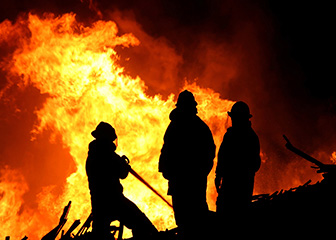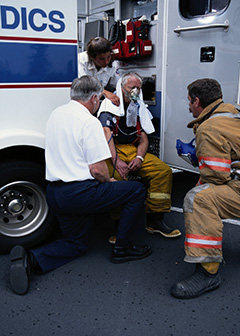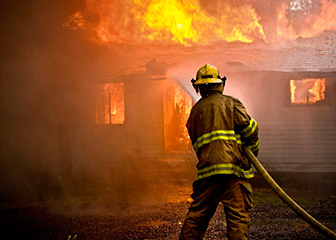
Firefighters begin their careers by attending fire academy training.
Firefighters typically enter the occupation with a postsecondary non-degree award in fire science or a related discipline. In many jurisdictions, however, the entry-level education needed to become a firefighter is a high school diploma or equivalent. Most firefighters also must pass written and physical tests, complete a series of interviews, and hold an emergency medical technician (EMT) certification. All firefighters receive extensive training after being hired.
Applicants for firefighter jobs typically must be at least 18 years old and have a valid driver’s license. They must also pass a medical exam and drug screening to be hired. After being hired, firefighters may be monitored on a random basis for drug use.
Education
Most firefighters enter the occupation with postsecondary education, typically a postsecondary non-degree award fire science or a related discipline. There are also associate’s degree programs available. In many jurisdictions, however, the entry-level education needed to become a firefighter is a high school diploma or equivalent.
Training
Entry-level firefighters receive several weeks of training at fire academies run by the department or by the state. Through classroom instruction and practical training, recruits study fire-fighting and fire-prevention techniques, local building codes, and emergency medical procedures. They also learn how to fight fires with standard equipment, including axes, chain saws, fire extinguishers, and ladders.
Some fire departments have accredited apprenticeship programs that last up to 4 years. These programs combine formal instruction with on-the-job-training under the supervision of experienced firefighters.
In addition to participating in training programs conducted by local or state fire departments and agencies, some firefighters attend federal training sessions sponsored by the National Fire Academy. These training sessions cover topics including executive development, antiarson techniques, disaster preparedness, hazardous materials control, and public fire safety and education.
Important Qualities
Analytical skills. Firefighters need to quickly evaluate emergency scenes and decide what to do.
Communication skills. Firefighters must be able to communicate conditions at an emergency scene to other firefighters and to emergency-response crews.
Courage. Firefighters must enter dangerous situations to do their jobs.
Physical stamina. Firefighters may have to stay at disaster scenes for long periods of time to rescue and to treat victims. They may be called to respond to emergencies at any hour of the day.
Physical strength. Firefighters must be strong enough to move equipment and debris at an emergency site. They also need to be able to carry victims who cannot walk.
Teamwork. When working at dangerous emergency sites, firefighters must work as well-trained teams to react quickly and to minimize injuries.
Certification
Firefighters must usually be certified as emergency medical technicians at the EMT-Basic level. Some fire departments require firefighters to be certified as paramedics.
In some departments, it is possible to earn these certifications after being hired. For more information, see the profile on emergency medical technicians and paramedics.
Some states have mandatory or voluntary firefighter training and certification programs.
Advancement
Fire fighters can be promoted to engineer, then lieutenant, captain, battalion chief, assistant chief, deputy chief, and finally, chief. For promotion to positions beyond battalion chief, many fire departments now require a bachelor's degree, preferably in fire science, public administration, or a related field. The National Fire Academy also offers a certification as executive fire officer. Fire fighters need at least an associate's degree to be eligible for that certification.









